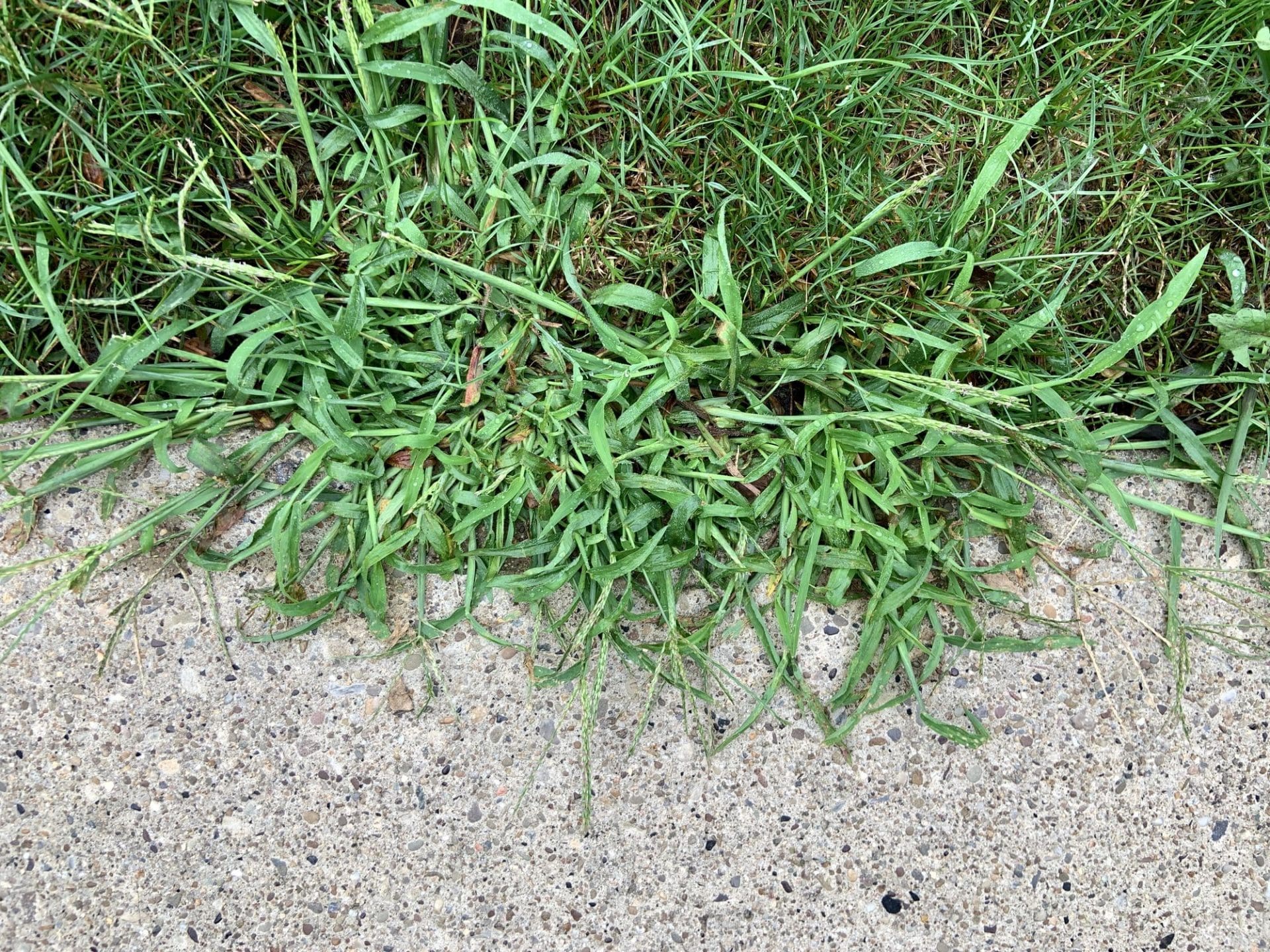
Crabgrass is one of the most persistent and frustrating weeds for homeowners in Livonia, and surrounding Michigan areas. While it may not seem like a problem in early spring, crabgrass seeds begin germinating as soon as soil temperatures reach 55°F for a few consecutive days—often as early as late March or early April. By summer, an untreated lawn can be overrun with this invasive weed, leading to thicker patches, bare spots, and increased competition for nutrients.
The best defense? Pre-emergent herbicide treatments. When applied at the right time, these treatments create a barrier that prevents crabgrass seeds from sprouting, keeping your lawn thick, healthy, and weed-free.
In this article, we’ll cover:
- Why crabgrass is a major problem in Michigan lawns
- How pre-emergent treatments work
- The best time for application
- What homeowners can do to maximize results
Let’s start by understanding why crabgrass is such a stubborn issue in the first place.
Why Crabgrass is a Problem in Michigan Lawns
Crabgrass is an aggressive, fast-growing annual weed that thrives in Michigan’s summers. It takes advantage of thin, weak, or patchy lawns, quickly outcompeting healthy grass for sunlight, water, and nutrients.
Key Challenges Crabgrass Causes:
- Rapid Spread – A single crabgrass plant can produce up to 150,000 seeds, ensuring future infestations if left untreated.
- Bare Spots & Lawn Weakness – Crabgrass dies in fall, leaving ugly bare patches that make it easier for more weeds to invade.
- Resilience to Mowing – Unlike turfgrass, crabgrass grows low and spreads horizontally, meaning regular mowing won’t stop it.
- Harsh Appearance – It creates thick, clumpy patches that disrupt a lawn’s uniform look.
Since crabgrass is such a prolific spreader, waiting until it’s visible to take action is already too late. That’s why prevention is key—and pre-emergent treatments offer the best solution.
How Pre-Emergent Treatments Stop Crabgrass Before It Starts
Unlike post-emergent herbicides that kill existing weeds, pre-emergent treatments work before crabgrass ever appears. These specialized herbicides create an invisible barrier in the soil, preventing crabgrass seeds from sprouting.
Here’s how it works:
- Absorption – Once applied, the pre-emergent seeps into the top layer of soil, where crabgrass seeds lie dormant.
- Germination Block – As soil temperatures rise, crabgrass seeds attempt to sprout, but the treatment stops them from developing roots.
- Extended Protection – The barrier remains active for several weeks, reducing the chance of crabgrass taking hold.
Important to Note: Pre-emergent treatments do not kill existing weeds—they only stop new ones from emerging. If crabgrass has already sprouted, a different approach (like spot treatments) will be needed.
Timing plays a crucial role in how effective pre-emergent treatments are. Up next, we’ll discuss the best time to apply pre-emergents in Michigan for maximum protection.

When to Apply Pre-Emergent for Maximum Effectiveness
In Michigan, timing is everything when it comes to pre-emergent crabgrass control. If applied too early, the treatment may break down before crabgrass starts germinating. If applied too late, the seeds will have already sprouted, making it ineffective.
So, when’s the sweet spot? Late March to mid-April is ideal in Livonia and surrounding areas, depending on the weather. Since crabgrass germinates once soil temperatures reach 55°F for several days, it’s crucial to monitor the forecast. A good rule of thumb:
- Apply when daytime temperatures start reaching the mid-50s consistently
- Use soil temperature tracking tools or local lawn care expertise
- Apply before forsythia shrubs finish blooming—this is a natural indicator
Applying at the right time ensures the pre-emergent forms its protective barrier before crabgrass has a chance to invade.
In the next section, we’ll go over how to get the best results from pre-emergent treatments and what homeowners can do to maintain a healthy lawn.
Tips for Maximizing Pre-Emergent Effectiveness
Applying pre-emergent at the right time is crucial, but how it’s applied also makes a big difference. Here are some key steps to ensure the treatment works effectively:
- Even Coverage is Essential – Uneven application can leave gaps where crabgrass can still sprout. Using a broadcast spreader ensures thorough coverage.
- Water it In – After application, the treatment needs to be activated by water. A light watering or rainfall helps it penetrate the soil.
- Avoid Disturbing the Soil – Once applied, don’t aerate or rake deeply in treated areas, as this can break the barrier.
- Don’t Seed Immediately After – Since pre-emergent stops all seed germination, wait at least 8-10 weeks before overseeding your lawn.
By following these steps, you’ll create a strong defense against crabgrass before it has a chance to take over.

Protect Your Lawn from Crabgrass This Spring
Crabgrass is a persistent problem in Michigan lawns, but taking action early is the best way to prevent an outbreak. By applying a pre-emergent treatment at the right time, homeowners in Livonia, and surrounding areas can stop this invasive weed before it even begins to grow.
To recap:
- Apply pre-emergent in late March to mid-April, before soil temperatures reach 55°F consistently.
- Ensure even coverage and water it in for maximum effectiveness.
- Avoid disturbing the soil after application to maintain the protective barrier.
- Plan ahead—if you need to overseed, wait at least 8–10 weeks after treatment.
For homeowners who want expert application and guaranteed results, professional lawn care services can ensure precise timing and even application for the best crabgrass prevention.
If you’re looking for pre-emergent lawn care in Livonia and surrounding areas, Independent Lawn Service is here to help. Contact us at (734) 600-9161 to schedule your spring treatment and keep your lawn healthy all season long!
